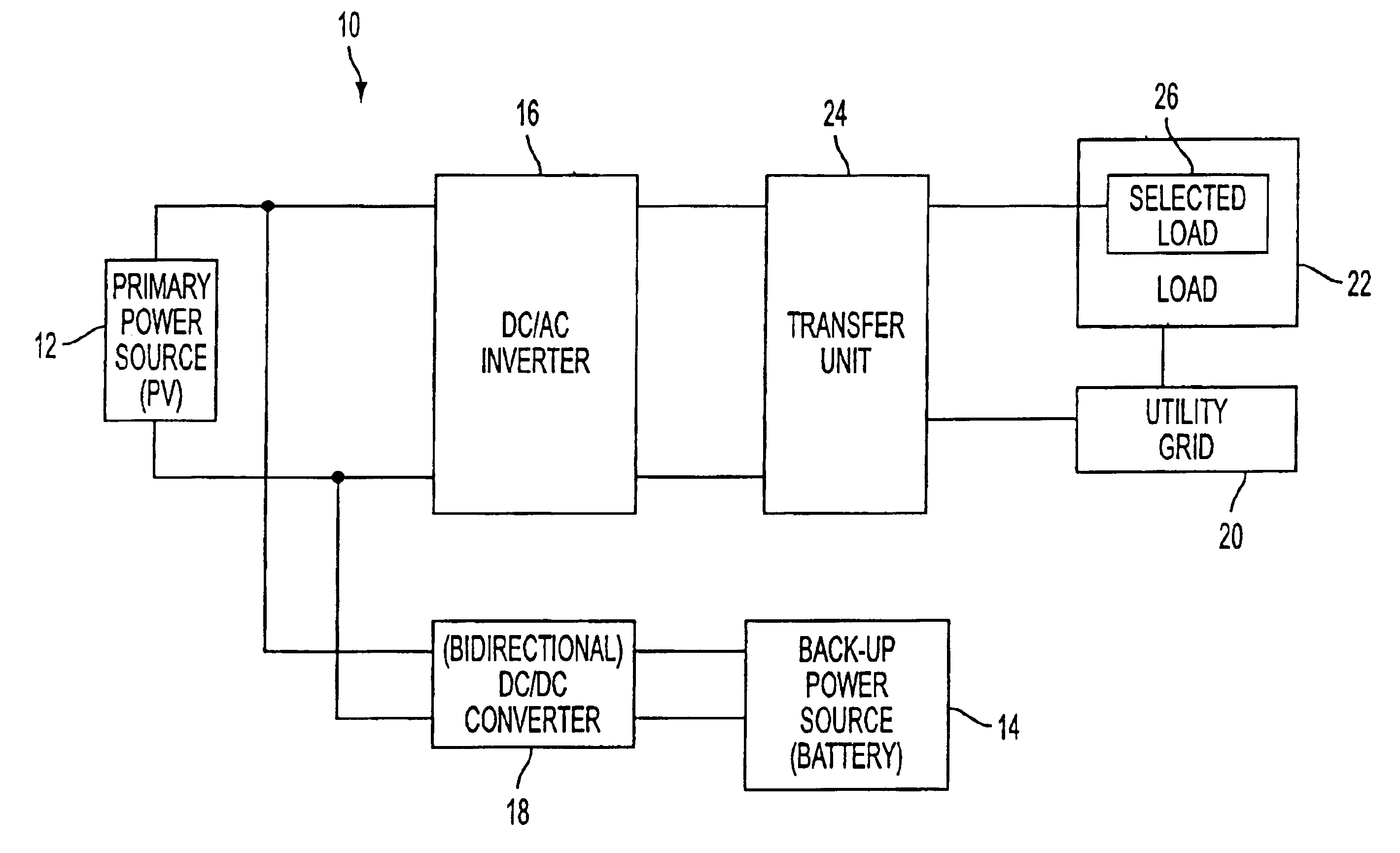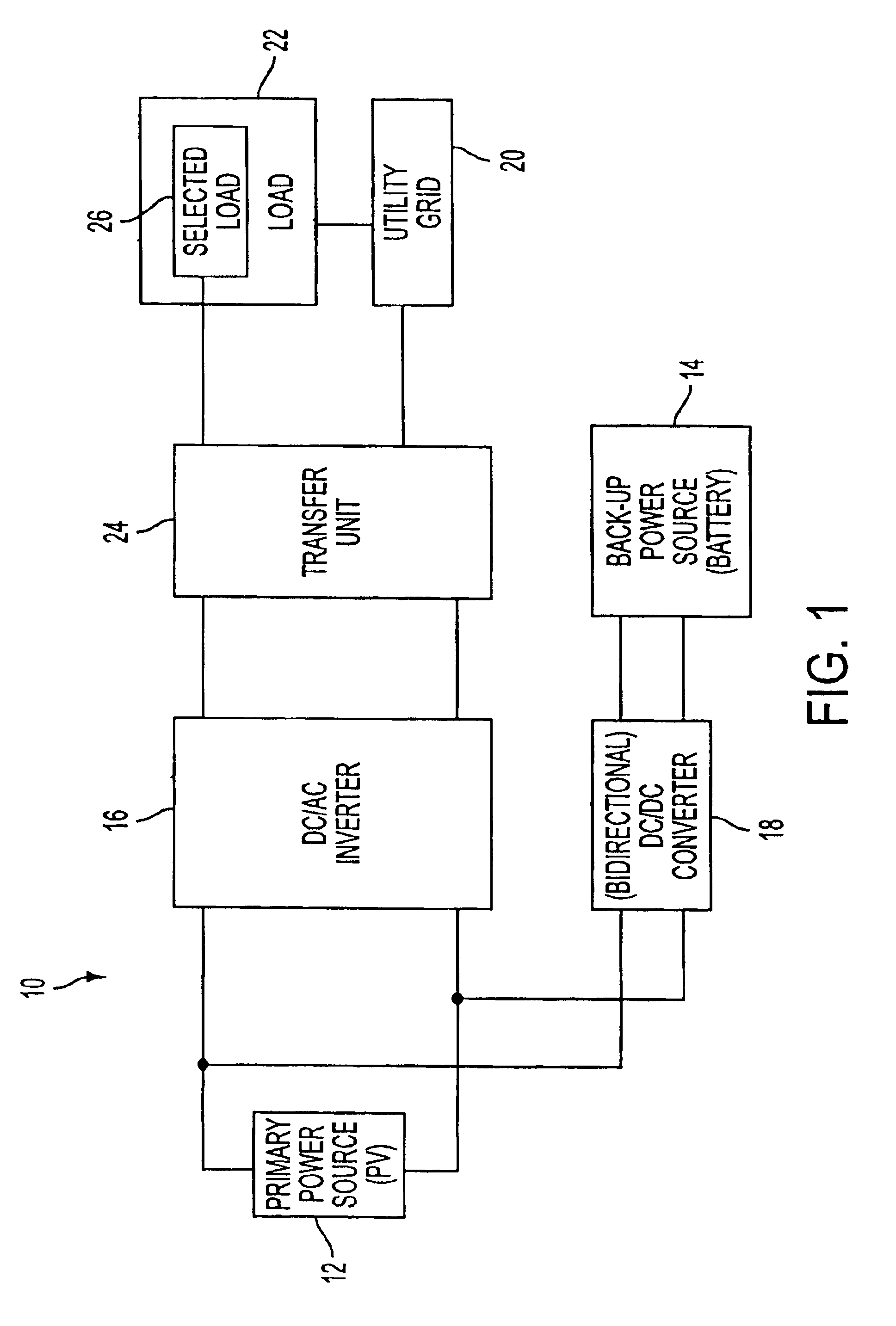Grid-connected power systems having back-up power sources and methods of providing back-up power in grid-connected power systems
a power system and grid-connected technology, applied in emergency power supply arrangements, transportation and packaging, emergency power supply, etc., can solve the problems of limiting the voltage output of the pv array and the voltage input of the dc/ac inverter to 48vdc nominal, and unable to provide grid power to the load, etc., to achieve the effect of reducing the amount of utility-owned power consumed by the load and saving energy
- Summary
- Abstract
- Description
- Claims
- Application Information
AI Technical Summary
Benefits of technology
Problems solved by technology
Method used
Image
Examples
Embodiment Construction
[0051]A grid-connected power system 10 according to the present invention is depicted in FIG. 1 and comprises a primary power source 12 providing direct current electricity, a back-up power source 14 providing direct current electricity, a DC / AC inverter 16 for converting the direct current electricity of the primary and back-up power sources into alternating current electricity, and a DC / DC converter 18. The primary power source 12 preferably comprises a photovoltaic (PV) power source including an array of PV cells which produce DC electricity from sunlight. However, the primary power source may comprise various other DC power sources, with or without PV, including fuel cells and hydroelectric power sources. The back-up power source 14 preferably comprises a rechargeable DC battery, but may comprise various other rechargeable or non-rechargeable DC power sources including fuel cells, DC gen-sets, flywheels, small power generators and (ultra) super-capacitors. The battery may compri...
PUM
 Login to View More
Login to View More Abstract
Description
Claims
Application Information
 Login to View More
Login to View More - R&D
- Intellectual Property
- Life Sciences
- Materials
- Tech Scout
- Unparalleled Data Quality
- Higher Quality Content
- 60% Fewer Hallucinations
Browse by: Latest US Patents, China's latest patents, Technical Efficacy Thesaurus, Application Domain, Technology Topic, Popular Technical Reports.
© 2025 PatSnap. All rights reserved.Legal|Privacy policy|Modern Slavery Act Transparency Statement|Sitemap|About US| Contact US: help@patsnap.com



